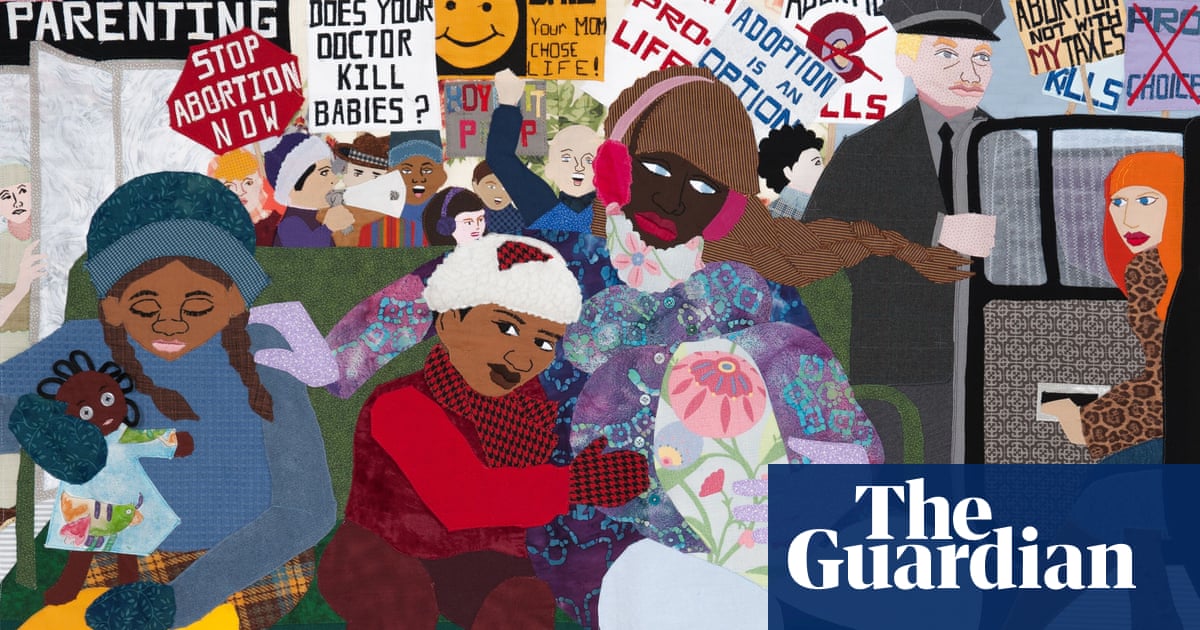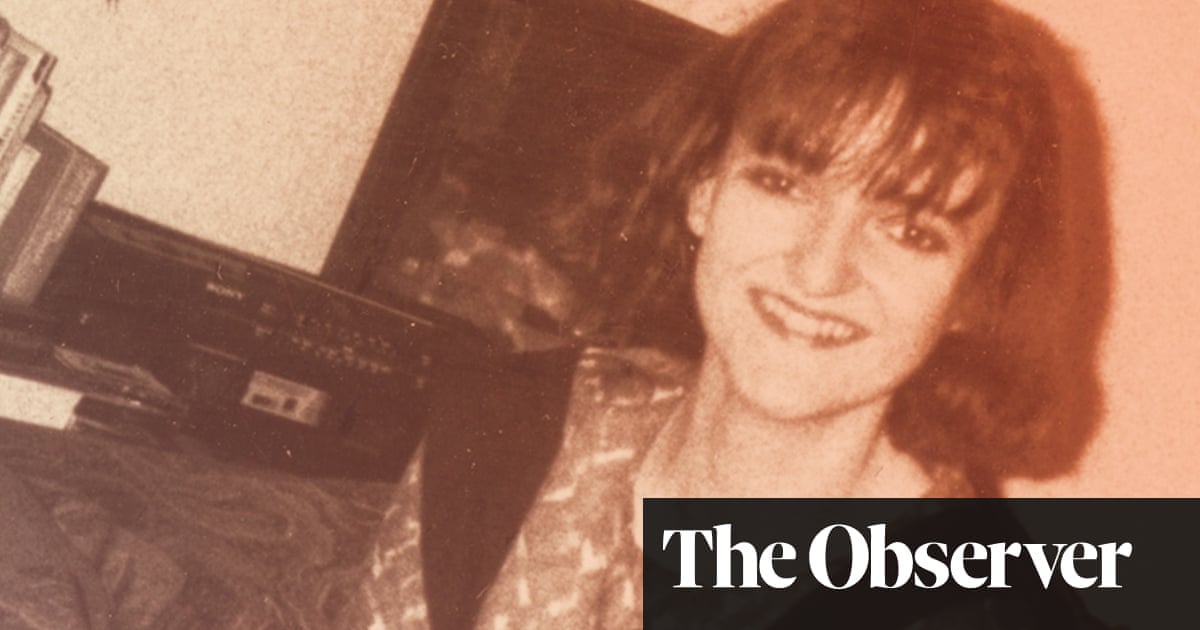
Anyone who thought abstract art was a club of white, male “lone geniuses” got an unexpected wake-up call in 2002, when quilts from the Alabama hamlet of Gee’s Bend first toured US museums. The quilts’ luscious hues, scissored shapes and improvised visual rhythms garnered comparisons to Paul Klee and Henri Matisse. Their creators were an intergenerational community of African American women who, to this day, work in the tiny conurbation that was once a slave-owner’s plantation.
For Legacy Russell, an American feminist theorist and curator, the quilters’ impact has only grown in the two decades since that stunning museum tour. The New Bend, the travelling exhibition she has curated, explores the legacy of the Gee’s Bend quilters and the artists still working in their lineage, bringing together a 13-strong lineup of radical textile artists.
Sojourner Truth Parsons applies quilting methodology to buzzy paintings whose dancing, tumbling geometries in summer sky blue and tangerine recall Matisse’s cut-outs. “While she’s a painter, she’s been inspired by quilting in her own family traditions,” says Russell of the artist who has Mi’kmaq, African Canadian and settler heritage. “Quilting is instructive in how these artists expand what their visual plane can look like.”
Quilting’s significance as a way for marginalised people to channel expression is key for every artist in the exhibition. Russell wants to expand how the quilters’ achievements are understood in ways that go beyond the condescending labels of “craft” or “folk art”. “Those are designations that have very challenging histories in terms of being immensely racialised, classed and gendered,” she says.
The Right to (My) Life from 2017, by the Atlanta-based Dawn Williams Boyd, plays on quilts’ associations of domestic comfort and security, and their place in women’s lives. Its crowd scene foregrounds a careworn black mother whose arms protectively encircle her young family, while anti-abortion protesters wave banners and a pensive-looking white woman is escorted from her chauffeur-driven car. “Dawn calls her works ‘cloth paintings’ to invert our assumptions about what painterly practice might look like,” says Russell.
Craft’s resurgence has typically been framed as an antidote to life online, with a focus on touch, communal practice and a slower way of making. Yet it is textile history’s connection to computing technology that interests Russell, whose recent book Glitch Feminism tackles the potential for fluid identities in the digital era. For instance, punch-cards used to create weaving patterns on looms paved the way for the binary code that would enable the first computers. Textiles’ tech credentials are at the fore in Ctrl+Alt+Del, a Jacquard-woven tapestry by New Yorker Qualeasha Wood, in which she positions herself as a self-created divinity: a haloed selfie on her computer desktop, surrounded by celestial emojis and clouds.
The Gee’s Bend quilters’ threads – from their artistic innovations to their work’s political implications and community histories – have been picked up by artists far and wide. “The Gee’s Bend quilters aren’t in our rear-view,” the curator affirms. “They are all making together at the same point in history. We’re asking: ‘What does that dialogue really look like?’”
The new radicals … three more highlights from The New Bend
Qualeasha Wood’s Ctrl+Alt+Del, 2021
Qualeasha Wood’s tapestry brings a medium that was once the sole preserve of the ruling class into a contemporary online world where individuals are free to fashion their own identities. It is made on a Jacquard loom, whose punch cards paved the way for the creation of computers.
Basil Kincaid’s Midnight Prayers & The Journey of Becoming, 2022
Basil Kincaid hails from a long matriarchal line of quilters and, like those at Gee’s Bend, he repurposes donated or found fabrics to create silhouetted figures probing black history and trauma.
Zadie Xa’s Shrine painting 2: Western Yellowcedar, 2022
As curator Russell notes: “Artists from all sorts of backgrounds have been influenced by Gee’s Bend.” Korean-Canadian artist Zadie Xa draws on ancient Korean feminist shamanism and rural women’s communal quilting traditions.












